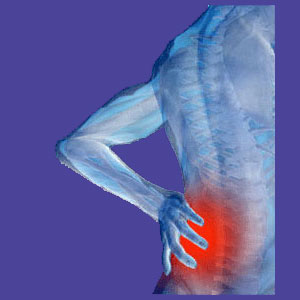
Lower back pain on the left side of the body is a unilateral expression of suffering that makes patients ponder why their pain is occurring in this specific location. The lower left side of the back is an area that is susceptible to pain from a wide range of possible causes, in much the same way as lower back pain on the right can occur from a diversity of anatomical origins.
The left side of the body is no more prone to developing pain than the right. However, many patients become preoccupied with the location of their symptoms and feel that the area affected must provide some clue as to the underling source. In some cases, this presumption is correct; but in others, the idea of painful location does not help in ascertaining the source.
This article explores lower back pain on the left side of the lumbar anatomy.
Locations for Lower Back Pain on the Left Side
Left is actually quite a relative term that might mean different things to different people. Some patients have pain directly over the vertebral column that tends towards the left or radiates clearly across the left lower lumbar region. Other patients have pain that seems to originate deeply or superficially on the left side of the spine, off center by one to several inches. Still other patients might have pain that is more on the lateral flank of the body, tending towards to objective left side, rather than the left region of the dorsal anatomy.
Many patients experience lower limb pain, tingling or numbness in association with left sided lower back pain. These sciatica expressions may or may not be related to the same source process as the actual back pain. No assumptions should be made linking or excluding sciatica to any lower back pain complaint without thorough diagnostic evaluation. Other patients may express middle or even upper back muscular pain in addition to the primary region of left side lower back pain.
Left Sided Lower Back Pain
The spine is completely symmetrical from side to side. This means that any spinal issue can affect ether side of the body symptomatically. Likewise, the musculature of the lumbar region and the postural muscles are also symmetrical, providing equal chance for pain to exist on the right or left from injury, degeneration, imbalance or other type of pathology.
The structures that are left-side specific often do not cause back pain, as they reside a bit higher than the lumbar region where most lower back pain is commonly found and are not typically associated with dorsal pain expressions, even when injured, diseased or otherwise dysfunctional. However, this is not an absolute rule. Pathology of the pancreas or spleen might create left sided lower back pain in rare circumstances. If diagnostic processing fails to find any more logical source of symptoms, then these organs should certainly be evaluated, just to be safe and thorough.
Lower Back Pain on the Left Analysis
Some painful locations can help to verify or discredit diagnostic theories which are suggested by care providers. For example, a herniated disc might be diagnosed at L5/S1, as these are extremely commonplace. However, the disc has assumed a posterolateral herniation with narrowing of the right side neural foramen. The diagnosis of nerve impingement is made based only on imaging evidence. However, symptoms do not exist in areas of the right leg, as clinically expected. Instead, pain resides in the lower back on the left side. Even though the horizontal placement of the disc pathology correlates to the location of the pain, there is no way the herniated disc could be responsible. Therefore, the finding of a posterolateral right sided bulging disc at L5/S1 should be considered incidental to the pain.
Lower Back Pain > Lumbar Back Pain > Lower Back Pain on the Left




